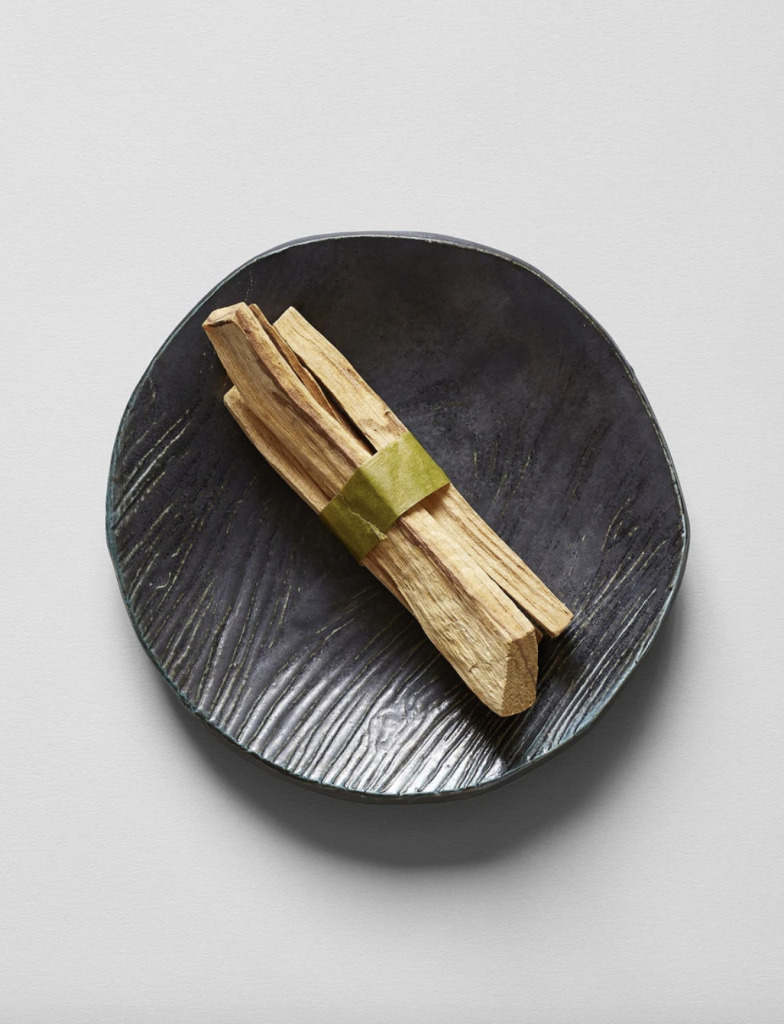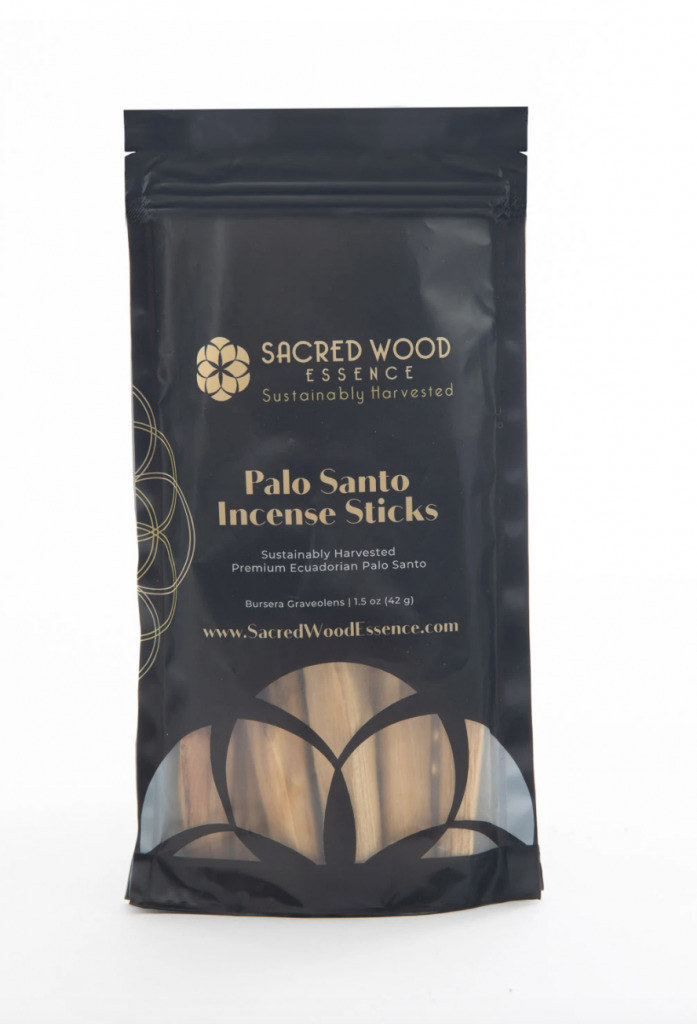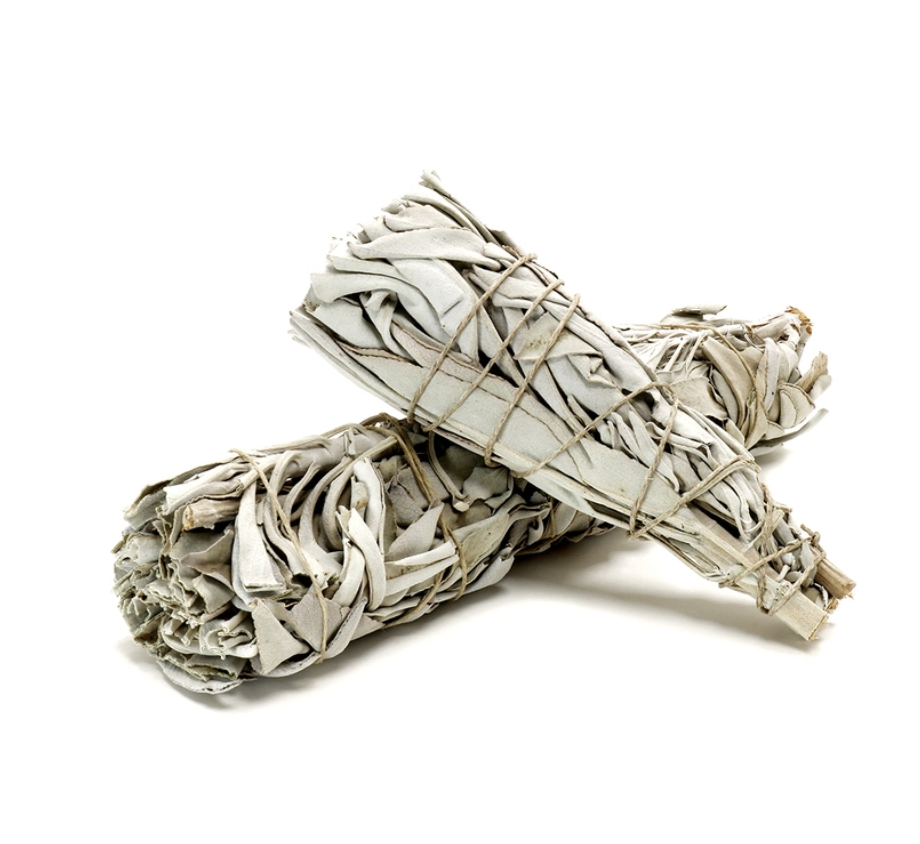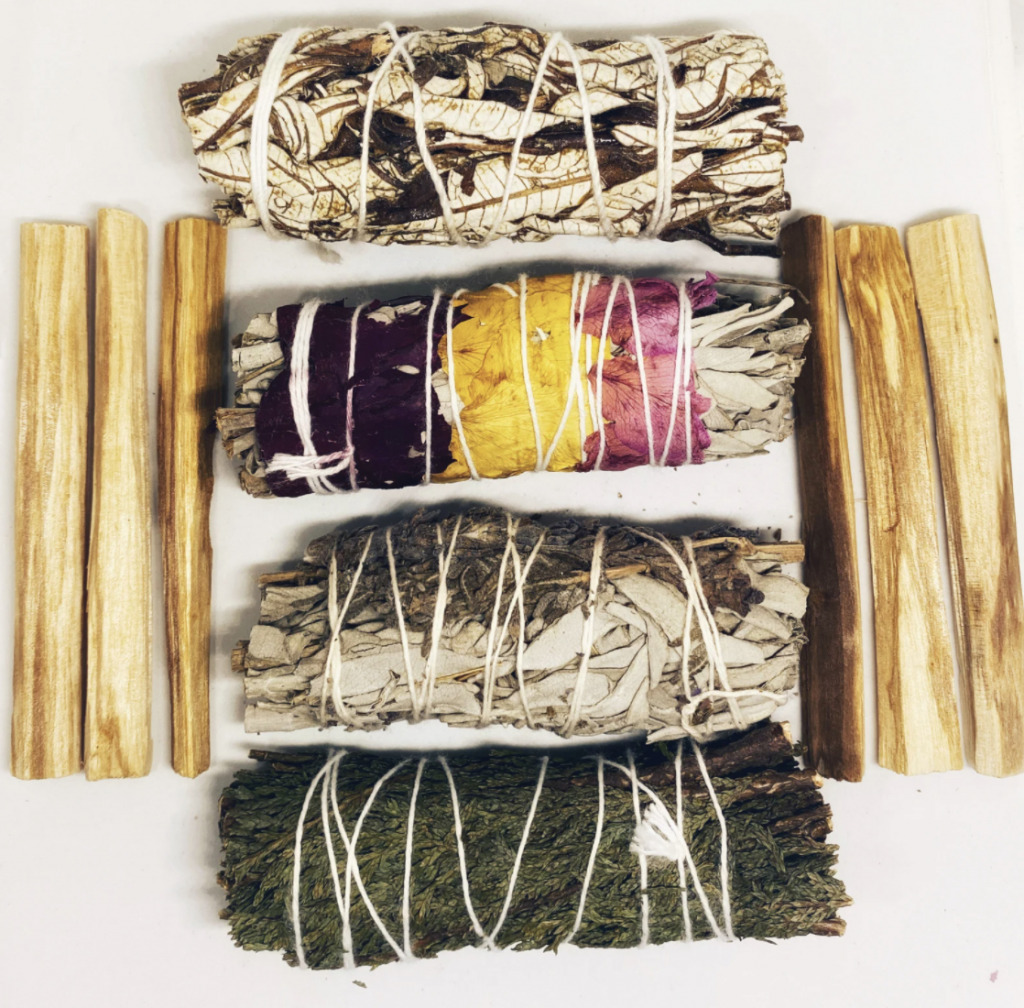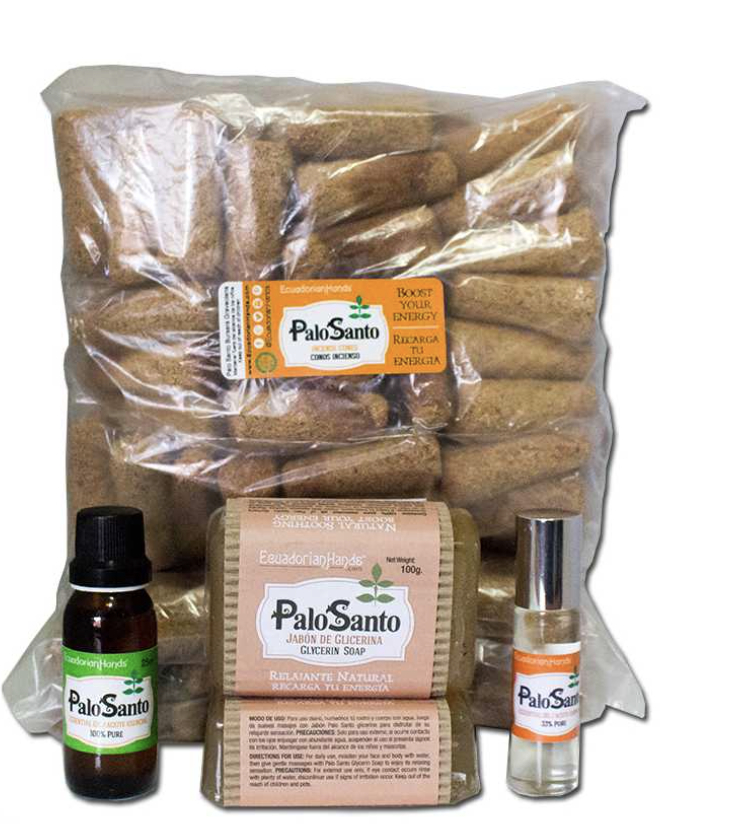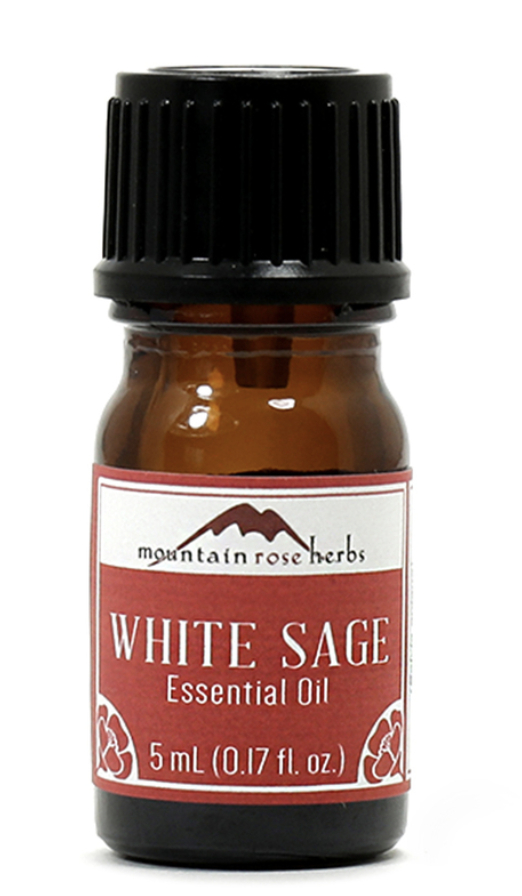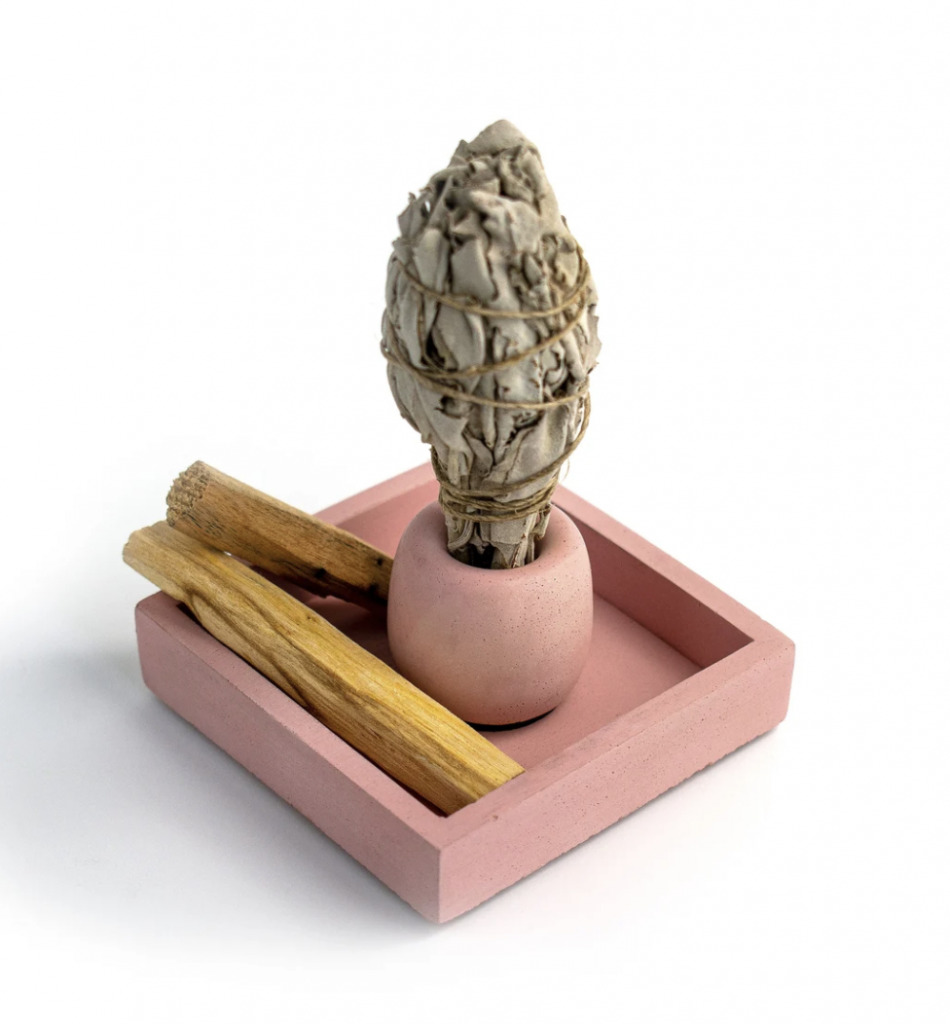Do you have some bad mojo in your space? Maybe you’ve moved into a new house and it doesn’t feel like your own yet, or you’re turning over a new leaf and need to literally clear the air around you.
Sage and palo santo are commonly used to cleanse the energy of whatever physical space you’re in, but these traditional, sacred practices are often abused by people who just want to participate in the latest trend. So how can you cleanse the energy of your space without appropriating the cultures these practices came from?

Energy Cleansing
Energy cleansing is an ancient practice, often called smudging, that clears negative energies/brings in positive energies to a space. While there are many ways to purify a space, two of the most popular methods use sage and palo santo.
Sage and Palo Santo — What’s the Difference?
View this post on Instagram
Sage is often used to rid a space of all energy, good or bad, so you can have a clean slate. While using sage for cleansing, you might consider burning incense or using essential oils alongside it to harbor the positive energy you would like to bring to your space. Sage can also clear 94% of airborne bacteria in a space.
Different strains of sage have different purposes. White sage, for example, can be used to ward off evil spirits, while black sage keeps your space safe during astral travel. Lavender sage works to chase away negativity in your space.
Palo santo is said to cleanse the negative energy away from your space and bring in good, positive energy. It doesn’t burn as easily as sage, so it may be best used for smaller spaces. It can also be used as a natural mosquito repellent and can relieve pain and stress. Keep an eye out on where the palo santo is sourced from while purchasing because you’ll want to make sure it is a sustainable practice! In the product description, many websites will explain where and how the palo santo is sourced.
While there’s no correct answer as to which is better, it’s worth looking at the benefits of each to see which would fit your situation better. Now, let’s explore their cultural associations.
Is Burning Sage and Palo Santo Cultural Appropriation?
In the past, burning sage had been outlawed. In the United States, it was illegal for Native Americans to practice smudging until 1978 with the passing of the American Indian Religious Freedom Act. The Native American people fought hard for their right to burn sage, and not so it could become a cutesy little trend thirty years later. It is also important to note that much of the sage sold in the trendy packs from boutiques is white sage, which is native to North America and therefore, to Native cultures.
Palo santo has also been put on the International Union for Conservation of Nature’s (IUCN) list of endangered species. It’s used in Native cultures for cleansing, and it’s used by shamans. The mass production of palo santo makes it difficult for these cultures to get the wood that they use for spiritual practices.
View this post on Instagram
Appropriation and appreciation walk a fine line, and the difference is the impact your use is making. Just in 2019, there was major outrage because Anthropologie was selling space cleansing kits that included white sage, which was leading to the mass overproduction of the plant. This, along with the arrest of four people in 2018 for the illegal harvesting of white sage in California because they had harvested 400 pounds of protected sage, leads to conversations about mass production of a sacred plant used in Native American cultures.
In order to understand if burning sage is cultural appropriation, you must look deeply at your intent: Are you only attempting to be trendy?
Then, you must look at where the product you got was sourced: Is this harvesting illegal? Is it making it difficult for Native Americans to access? Is it sustainable?
View this post on Instagram
Intent is everything. Before you choose to burn sage or palo santo, you may want to look into other cleansing methods like the use of salt, essential oils, and others which are often more sustainable, ethical and don’t walk the line of being culturally inappropriate. You should also do research before you choose to burn sage and palo santo on why cultures use them and their cultural importance. This way, you can do it with the intent to honor their practice and meaning. I strongly encourage you to do your research before you accidentally put your money toward a company that is profiting off of a culture’s spirituality.
Ethically Sourced Sage and Palo Santo
If you are going to participate in smoke cleansing, it’s important to make sure your sage and palo santo are ethically sourced. If you can’t burn in your house, there are also essential oils you can diffuse in your home — but make sure they’re ethically sourced, too.
Essentials For Smoke Cleansing
When smoke cleansing, it’s important to have the proper tools for the energy cleanse. Traditionally, abalone shells would be used in this ritual. Not only are they fantastic for catching ash, they’re also of the sea, considered one of Mother Earth’s “gifts.” Abalone is a connection to the ocean, bringing an extra sense of calm to the smoke cleansing, and therefore doubling up on the banishing of negative energy.
While you can find abalone shells around the Internet (and especially on Etsy), there are other options to use for smoke cleansing. We recommend these:

What are your thoughts on burning sage and palo santo? Let us know below!
To Learn More About Cultural Appropriation And Other Social Topics, Read These:
Are You Cultural Appropriating Or Appreciating? POC Share Their Insight On This Issue

